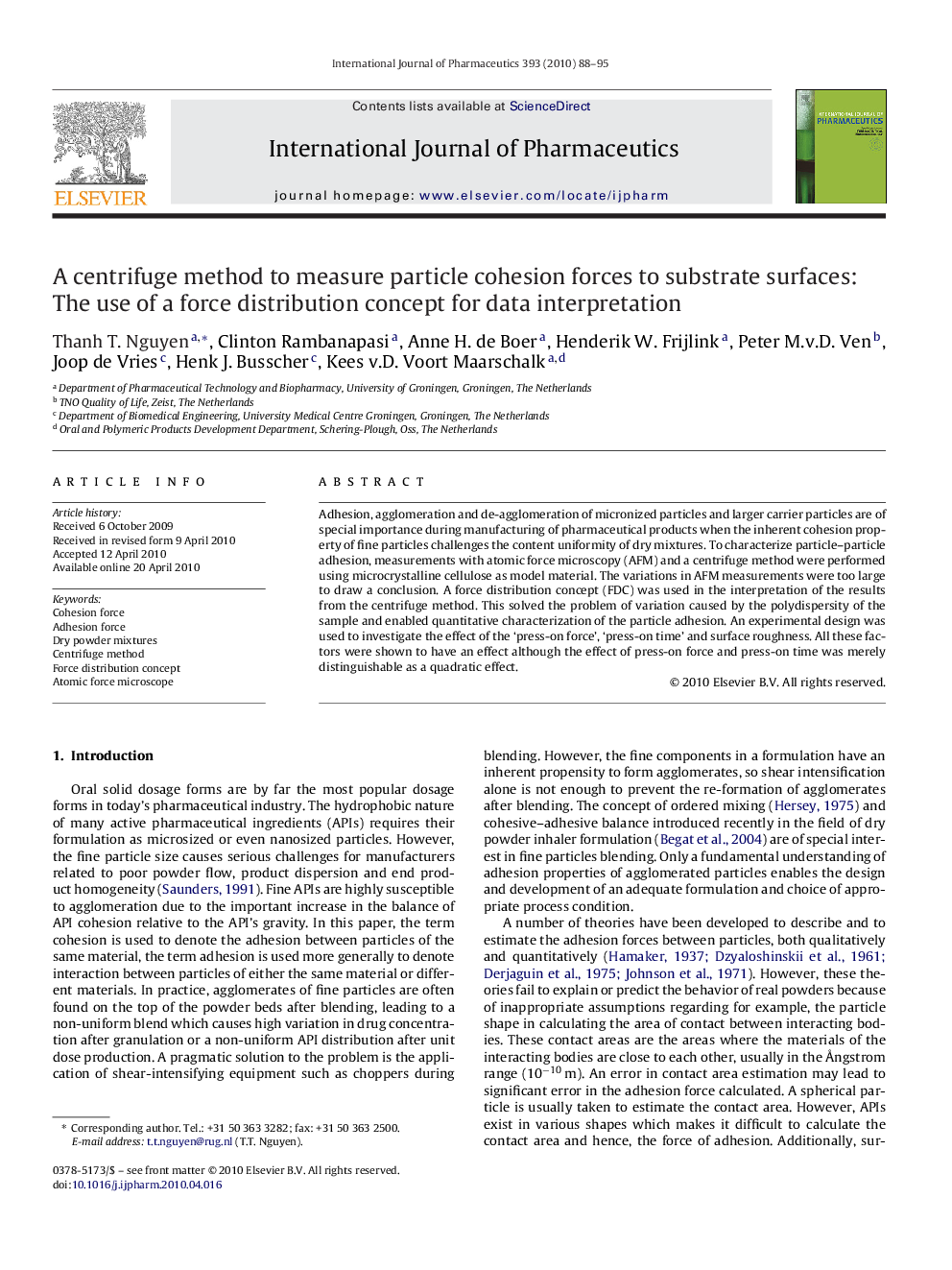| Article ID | Journal | Published Year | Pages | File Type |
|---|---|---|---|---|
| 2503861 | International Journal of Pharmaceutics | 2010 | 8 Pages |
Adhesion, agglomeration and de-agglomeration of micronized particles and larger carrier particles are of special importance during manufacturing of pharmaceutical products when the inherent cohesion property of fine particles challenges the content uniformity of dry mixtures. To characterize particle–particle adhesion, measurements with atomic force microscopy (AFM) and a centrifuge method were performed using microcrystalline cellulose as model material. The variations in AFM measurements were too large to draw a conclusion. A force distribution concept (FDC) was used in the interpretation of the results from the centrifuge method. This solved the problem of variation caused by the polydispersity of the sample and enabled quantitative characterization of the particle adhesion. An experimental design was used to investigate the effect of the ‘press-on force’, ‘press-on time’ and surface roughness. All these factors were shown to have an effect although the effect of press-on force and press-on time was merely distinguishable as a quadratic effect.
